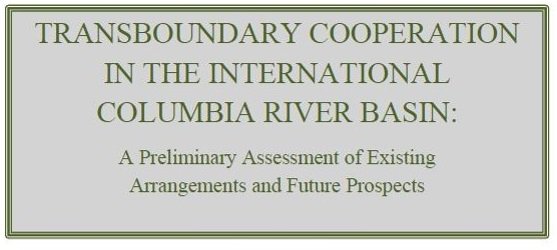Binational Report Points to Areas of Columbia River Collaboration
- September 03, 2015
- John Harrison

A new report commissioned by the Council and the Columbia Basin Trust identifies a number of areas for improved cooperation and collaboration across the international border in the Columbia River Basin.
The report responds to requests made by participants at the October 2014 International Columbia River conference in Spokane, Learning from Our Past to Shape Our Future, which was co-hosted by the Council and the Trust. Participants specifically challenged the Trust and Council to bring together individuals and organizations working across the international border to share data, information, and funding to collaborate on ways to effectively and efficiently address complex regional environmental and energy issues, as well as foster a greater sense of shared Columbia River Basin identity.
For the Council and Trust, whose officers signed a memorandum of agreement in 2000 (revised in 2011) to pursue projects of mutual interest in the international Columbia River Basin, the new report is an attempt to understand the current transboundary management landscape. In addition to documenting who is doing what, where, and with whom in the basin, the report also identifies the most compelling needs, interests and priorities for these initiatives so that any efforts to increase cooperation are seen as useful and elicit wide participation. The report also recommends potential next steps for the Council and Trust, and others, in their role as transboundary cooperation facilitators.
A total of 46 transboundary initiatives are described in the report, and 34 individuals were interviewed by the report authors, Ingrid Timboe and Meghan Carter. Based on the themes of working groups at the October transboundary conference, the identified initiatives fall into the following categories: ecosystem function; fish passage and restoration to areas blocked by dams; invasive species and/or toxic substances in water and land; climate change; energy; and transboundary river governance.
Based on the interviews, the most compelling needs identified in the report include:
- Improving basinwide coordination
- Coordinating fishery and hatchery management in the mainstem Columbia and its tributaries
- Creating integrated and consistent invasive species management protocols throughout the basin
- Improving understanding of interconnectedness and shared responsibility regarding basinwide resource management;, and
- Cultivating a Columbia River Basin identity and basin culture
Of these, the three with the greatest promise, according to the authors, are: 1) convening annual meetings or forums on transboundary issues such as, for example, efforts to eradicate invasive species; 2) creating a publicly accessible, shared transboundary database; and 3) expanding and integrating environmental monitoring programs to share information across the border.



